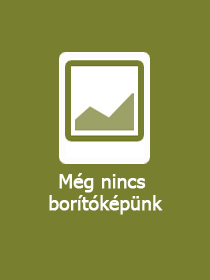
Fictional Languages in Science Fiction Literature
Stylistic Explorations
Sorozatcím: Routledge Studies in Speculative Fiction;
-
10% KEDVEZMÉNY?
- A kedvezmény csak az 'Értesítés a kedvenc témákról' hírlevelünk címzettjeinek rendeléseire érvényes.
- Kiadói listaár GBP 135.00
-
68 323 Ft (65 070 Ft + 5% áfa)
Az ár azért becsült, mert a rendelés pillanatában nem lehet pontosan tudni, hogy a beérkezéskor milyen lesz a forint árfolyama az adott termék eredeti devizájához képest. Ha a forint romlana, kissé többet, ha javulna, kissé kevesebbet kell majd fizetnie.
- Kedvezmény(ek) 10% (cc. 6 832 Ft off)
- Discounted price 61 491 Ft (58 563 Ft + 5% áfa)
68 323 Ft

Beszerezhetőség
Becsült beszerzési idő: A Prosperónál jelenleg nincsen raktáron, de a kiadónál igen. Beszerzés kb. 3-5 hét..
A Prosperónál jelenleg nincsen raktáron.
Why don't you give exact delivery time?
A beszerzés időigényét az eddigi tapasztalatokra alapozva adjuk meg. Azért becsült, mert a terméket külföldről hozzuk be, így a kiadó kiszolgálásának pillanatnyi gyorsaságától is függ. A megadottnál gyorsabb és lassabb szállítás is elképzelhető, de mindent megteszünk, hogy Ön a lehető leghamarabb jusson hozzá a termékhez.
A termék adatai:
- Kiadás sorszáma 1
- Kiadó Routledge
- Megjelenés dátuma 2024. május 31.
- ISBN 9781032688886
- Kötéstípus Keménykötés
- Terjedelem270 oldal
- Méret 229x152 mm
- Súly 600 g
- Nyelv angol
- Illusztrációk 5 Illustrations, black & white; 5 Halftones, black & white 616
Kategóriák
Rövid leírás:
Fictional languages in Science Fiction Literature surveys a large number of fictional languages, those created as part of a literary world, to present a multifaceted account of the literary phenomenon of glossopoesis (language invention).
TöbbHosszú leírás:
Fictional Languages in Science Fiction Literature surveys a large number of fictional languages, those created as part of a literary world, to present a multifaceted account of the literary phenomenon of glossopoesis (language invention). Consisting of a few untranslated sentences, exotic names, or even fully-fledged languages with detailed grammar and vocabulary, fictional languages have been a common element of English-language fiction since Thomas More?s Utopia (1516).
Different notions of the functions of such fictional languages in narrative have been proposed: as rooted in phonaesthetics and contextual features, or as being used for characterisation and construction of alterity. Framed within stylistics and informed by narrative theory, literary theory, literary pragmatics, and semiotics, this study combines previous typologies into a new 5-part reading model comprising unique analytical approaches tailored to science fiction?s specific discourse and style, exploring the relationship between glossopoesis, world-building, storytelling, interpretation, and rhetoric, both in prose and paratexts.
TöbbTartalomjegyzék:
Contents
Acknowledgements
List of texts
List of figures
Chapter 1 ? Fictional languages as stylistic and narrative devices
Chapter 2 ? A speculative function: philosophical languages
Chapter 3 ? A rhetorical function: dialectal extrapolations
Chapter 4 ? A descriptive function: world-building languages
Chapter 5 ? A diegetic function: superlanguages and antilanguages
Chapter 6 ? A paratextual function: different textualities
Chapter 7 ? Multifunctional readings
References
Index
Több






